It’s amazing what you find yourself engrossed in on TV.
Something that caught my eye over the last couple of weeks has been BBC One’s Garden Rescue. Garden Rescue pits garden designers Charlie Dimmock (of Ground Force-fame), the Rich Brothers (whose philosophy is to make gardening “cool” again) and Arit Anderson (an award-winning garden designer, writer and TV presenter) against each other. The prize for each designer to build an outdoor space around a families’ budget, while the losers have to help.
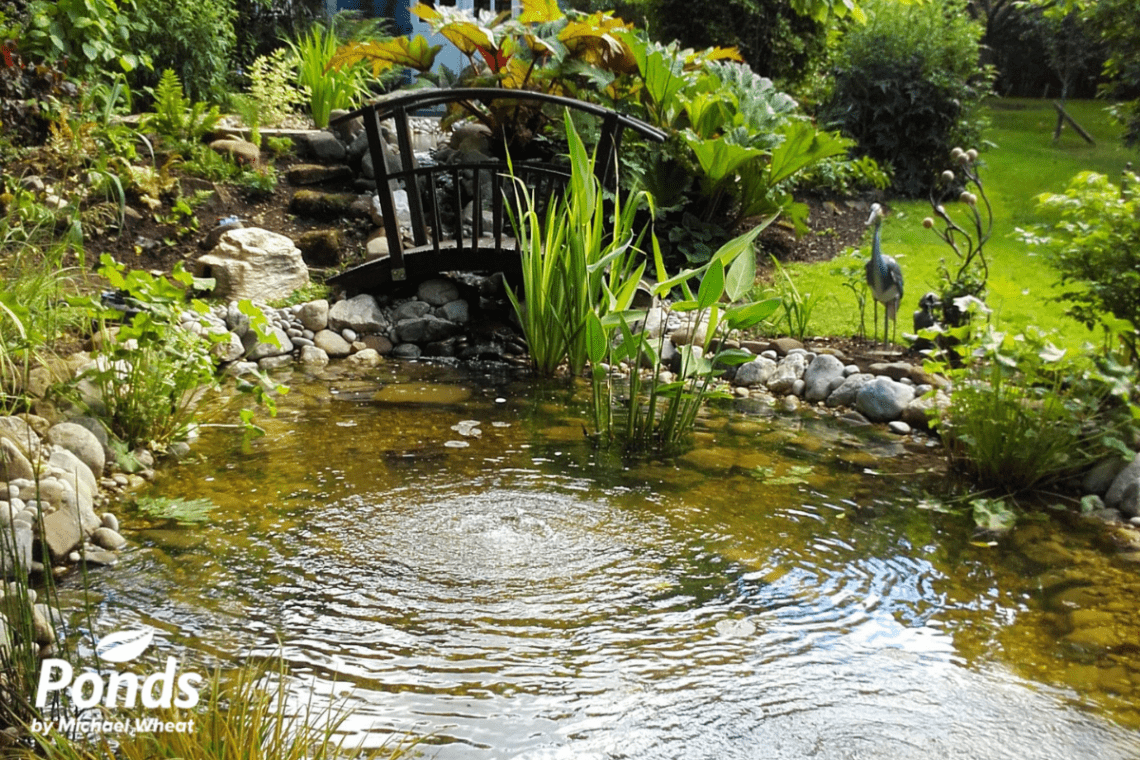
Key Takeaways
- Garden ponds, from wildlife ponds to sleek water gardens, can enhance outdoor spaces with either modern pond design ideas or traditional charm.
- Selecting the right pond liner and construction materials is crucial for integrating a pond into the garden’s overall design.
- A well-designed pond not only beautifies your garden but also supports local wildlife and provides a tranquil place for spending time outdoors.
Modern vs Traditional Pond Aesthetics
The episode I caught told the story of a family who had moved from rural Rutland Water to the city of Lincoln and had begun to miss their country life. This episode’s family specifically mentioned that they missed the nature, the openness of the countryside and were desperate for space that they got as a family when they lived in the country.
What was immediately apparent was the differing styles between the boys and the girls – the boys opted for a modern, open space with ample areas for entertaining. In contrast, Charlie designed a more traditional design, more intimate with room to spend time together as a family and grow vegetables.
The Rich brothers specialise in the modern garden. Contemporary garden and pond spaces are very much in demand now – creating bespoke designs to suit a range of clients and their outdoor spaces. Both Charlie and the Rich brother’s plans incorporated separate adult-only areas.
Embracing Flexibility in Garden Pond Design
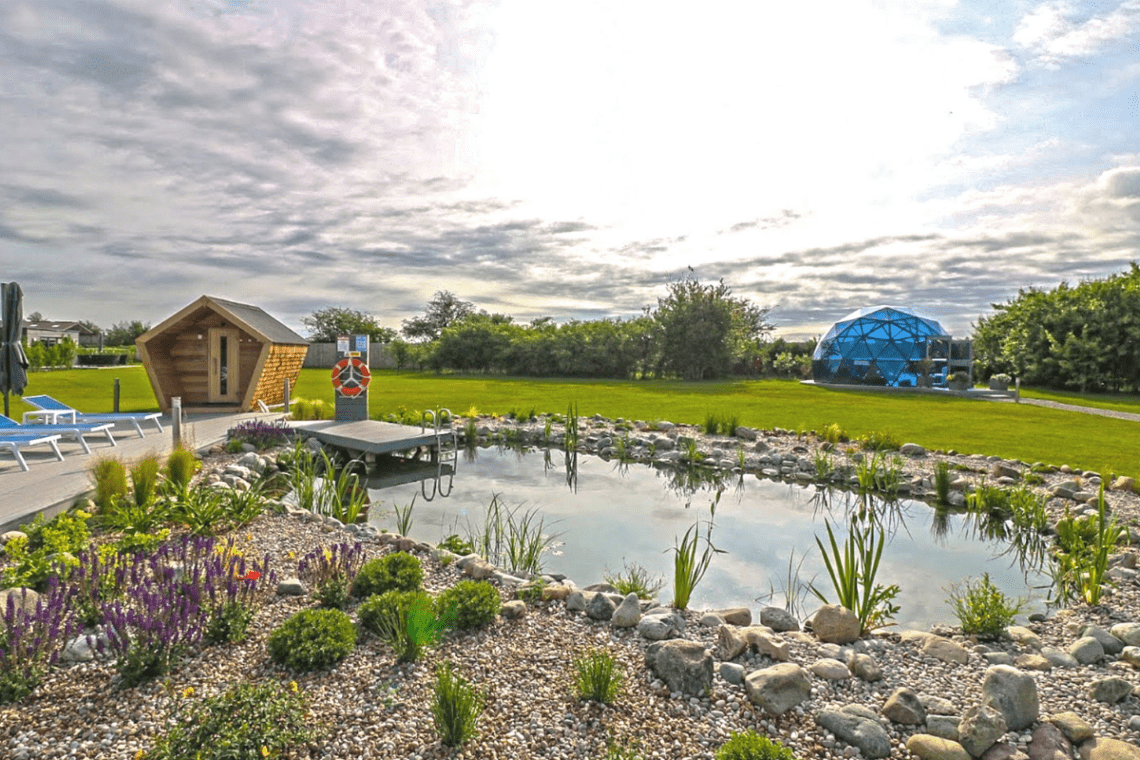
At Ponds by Michael Wheat, we pride ourselves on the understanding that adult-only space – and optimising an adult zone – is fundamental to the design of a garden and pond space.
We have worked on many ponds and swimponds that, while for families, have a dedicated seating area or observation area, perfect for parents to enjoy a glass of wine in the evening!
What is nice about a programme like Garden Rescue is that there is no correct answer regarding how you might approach your pond and how it inhabits your garden. However, in this week’s episode, the clients said they would like to incorporate aspects of both designs into their final project plan if that were the nature of the programme! I suppose that is the message here.
Bespoke Designs: Tailored to You and Your Garden
I believe it’s a common misconception that a traditional outdoor space has to be old-fashioned and boring.
What is lovely about pond building, something that our dedicated design team have noticed when designing ponds and swimponds, is that there isn’t a prescribed way of creating the aquatic space and decking and surrounding landscaping. Everything is bespoke – designed with the customer and the garden in mind.
Choosing the Perfect Pond Design: Modern Elegance or Traditional Charm
Choosing between a modern or traditional pond design can significantly impact the overall feel of your outdoor space. It’s important to consider factors such as your home’s aesthetic, desired maintenance levels and the role of wildlife in your garden.
Traditional Garden Pond Design
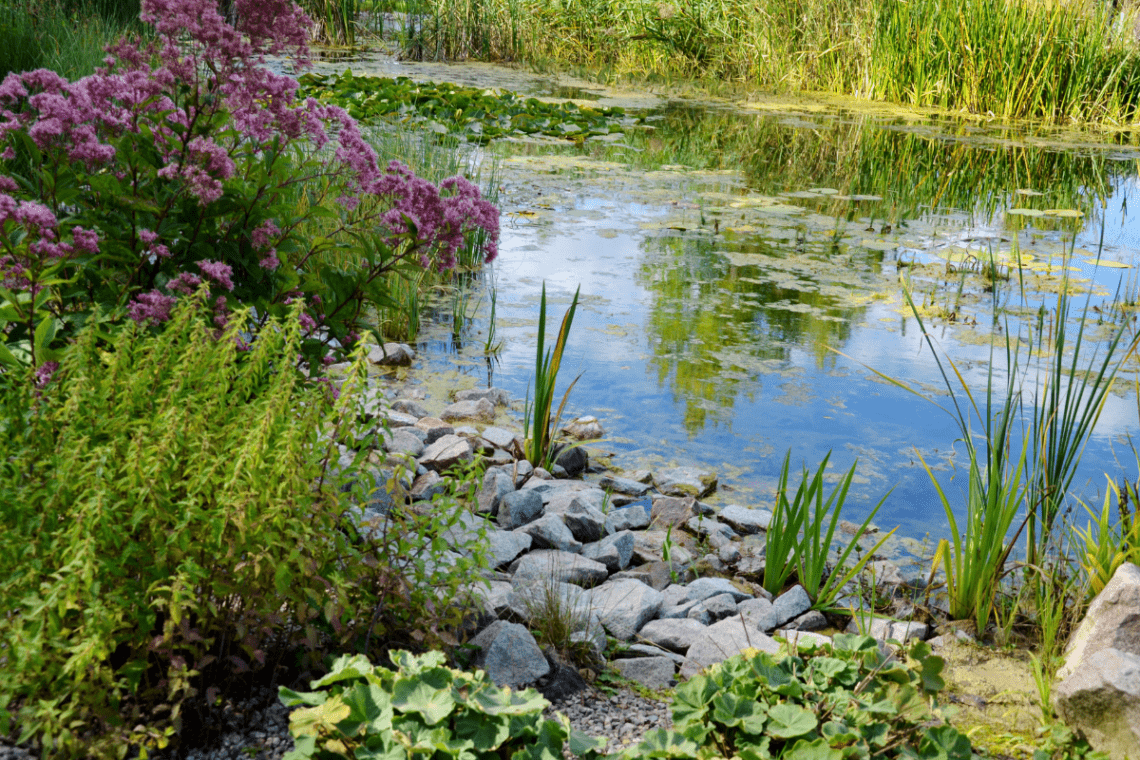
- Characterised by a Naturalistic Approach: Traditional ponds mimic natural ponds, often irregular in shape, aiming to blend seamlessly with the surrounding landscape. They frequently feature a variety of pond plants, like water lilies, lily pads and ornamental grasses, and include both aquatic and marginal plants to create a habitat that feels as if it has been part of the landscape for years.
- Elements of Wildlife Attraction: A traditional sunken pond can be a haven to encourage wildlife, whether you like the appeal of a wildlife pond with floating plants or a traditional koi pond water garden. It’s not uncommon to find wildlife ponds teeming with birds, insects, and amphibians, drawn to the water and the shelter provided by pond plants.
- Use of Natural Materials: In traditional pond design, natural materials like rocks, stone and wood dominate, creating an organic feel. These materials are chosen to complement the existing landscape design, ensuring the pond integrates well with its environment.
- Water Features: Cascading waterfalls and babbling brooks are quintessential to traditional ponds, adding a dynamic element while promoting water circulation and aeration, beneficial for pond health and ecosystem balance.
Modern Garden Pond Design
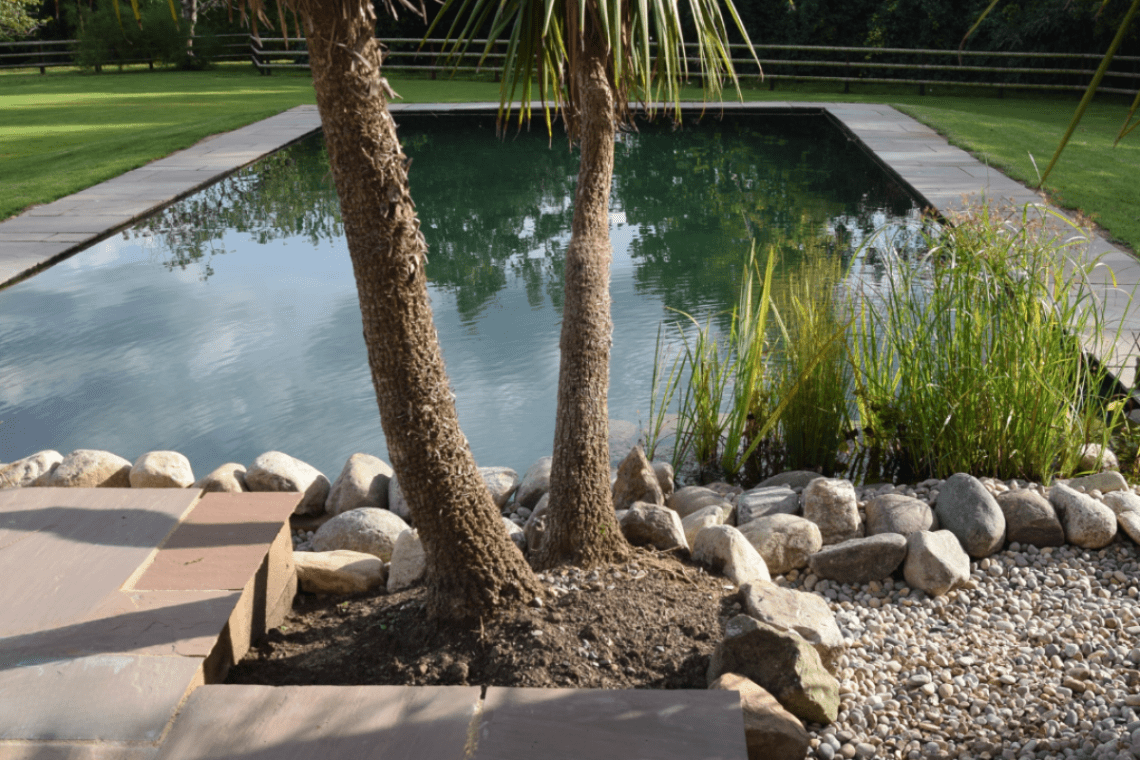
- Sleek and Minimalistic: Modern ponds embrace simplicity and geometry, often featuring clean lines and defined shapes like rectangles or circles. The design is less about emulating a natural look and more about creating a statement piece that stands out.
- Incorporation of Technology: Modern ponds often use the latest in pond technology, including sophisticated filtration systems, LED lighting, and even automated maintenance systems to ensure water clarity and quality with minimal manual intervention.
- Material Choices: Contemporary designs frequently use materials like glass, stainless steel, and concrete, offering a more polished and sometimes futuristic aesthetic. These materials are chosen for their durability and ability to create striking visual contrasts.
- Focus on the Water Itself: In modern ponds, the water feature itself often takes centre stage. This could mean incorporating a mirror-like still water surface that reflects the sky and surrounding architecture or designing an artistic water sculpture that serves as the focal point.
Choosing Your Style
The decision between a modern or traditional pond ultimately boils down to personal preference and the existing style of your garden and home. Traditional ponds in gardens offer a slice of nature, bringing an organic, calming presence to your outdoor space. In contrast, modern ponds provide a sleek, architectural element that can complement contemporary designs, making a bold statement.
Both styles have their place in garden design, and with creativity and inspiration, it’s even possible to blend elements of both to create a pond that is uniquely yours. Whether you lean towards the rustic charm of traditional styles or the clean lines of modern design, a well-planned pond can become a cherished feature of your outdoor living area.
Designing Your Pond
When starting your garden pond project, it’s essential to consider both the visual aspects and practicalities, such as pond maintenance tips and integration with your existing layout.
Incorporating Water Features
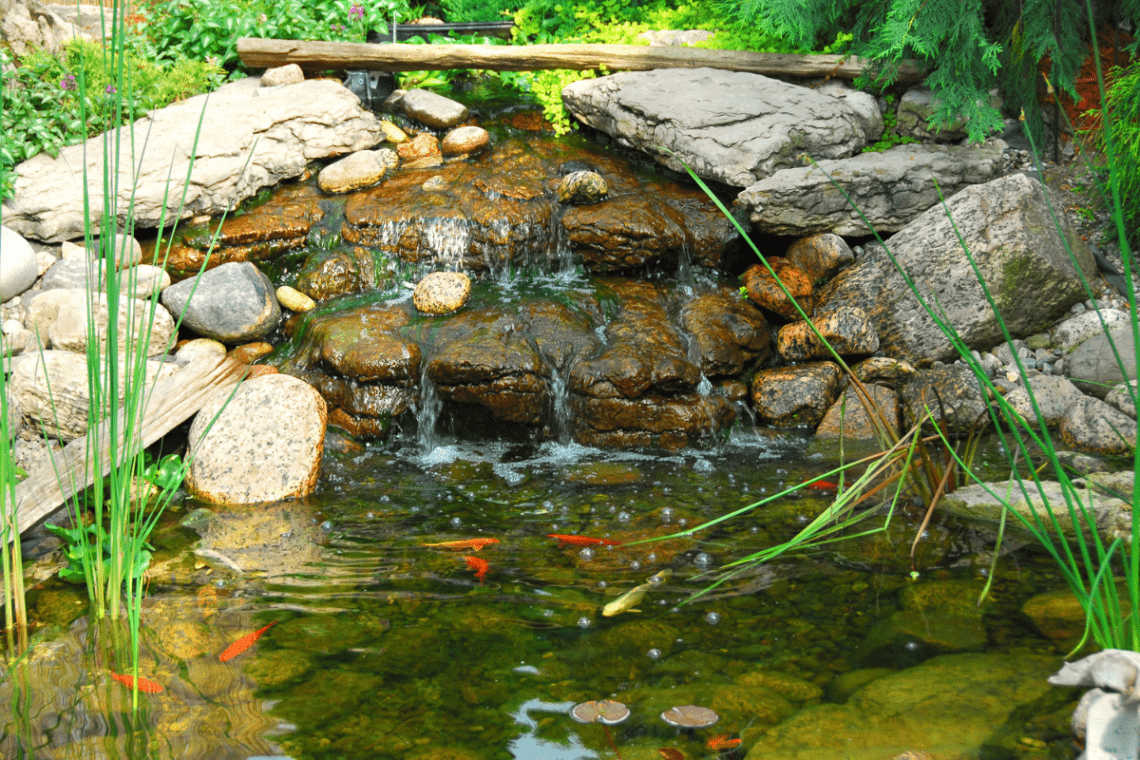
Waterfalls and water features are a central element in both modern and traditional pond designs. For a contemporary garden, consider sleek water blades or cascades that complement geometric shapes. These create a focal point and add movement to your pond. In traditional designs, a tiered fountain or a natural rock waterfall can introduce a more intimate ambiance.
Choosing Pond Shapes and Sizes
Pond shape and size should be determined by the style you’re aiming for and the space available. Contemporary designs often favour symmetry and geometric shapes, such as rectangles or perfect circles.
For a more natural look, consider irregular shapes that mimic natural water bodies. The size of your pond should also be proportionate to your space; for example, a large feature in a small area can feel overwhelming, while a pond that is too small might seem insignificant in expansive surroundings.
Creating a Healthy Aquatic Environment
Cultivating a healthy pond requires attention to water quality and the right mix of soil, rocks, plants and fish. Ensuring a balance in these elements supports a vibrant pond ecosystem.
Water Quality and Filtration
You should prioritise water quality. Assess the pH level, aiming for a neutral range to suit the majority of pond life. The filtration system is also crucial to maintain pristine water. Choose a system that can handle the volume and type of your pond. Regular maintenance of your filtering system is necessary to prevent algae build-up and keep the water clear.
Selecting Aquatic Plants and Fish
The plants you select should be native and suitable for your pond’s condition and location. They’ll provide oxygen and help with filtration, creating a self-sustaining environment. Consider the wildlife that might visit your pond habitat when adding plants.
Fish ponds and koi ponds add extra dimension to your backyard or garden area but these fish ponds require a mix of deeper sections and shallow areas and generally require more care. Goldfish thrive in various conditions, making them a versatile choice for beginners.
Ready to Transform Your Garden?
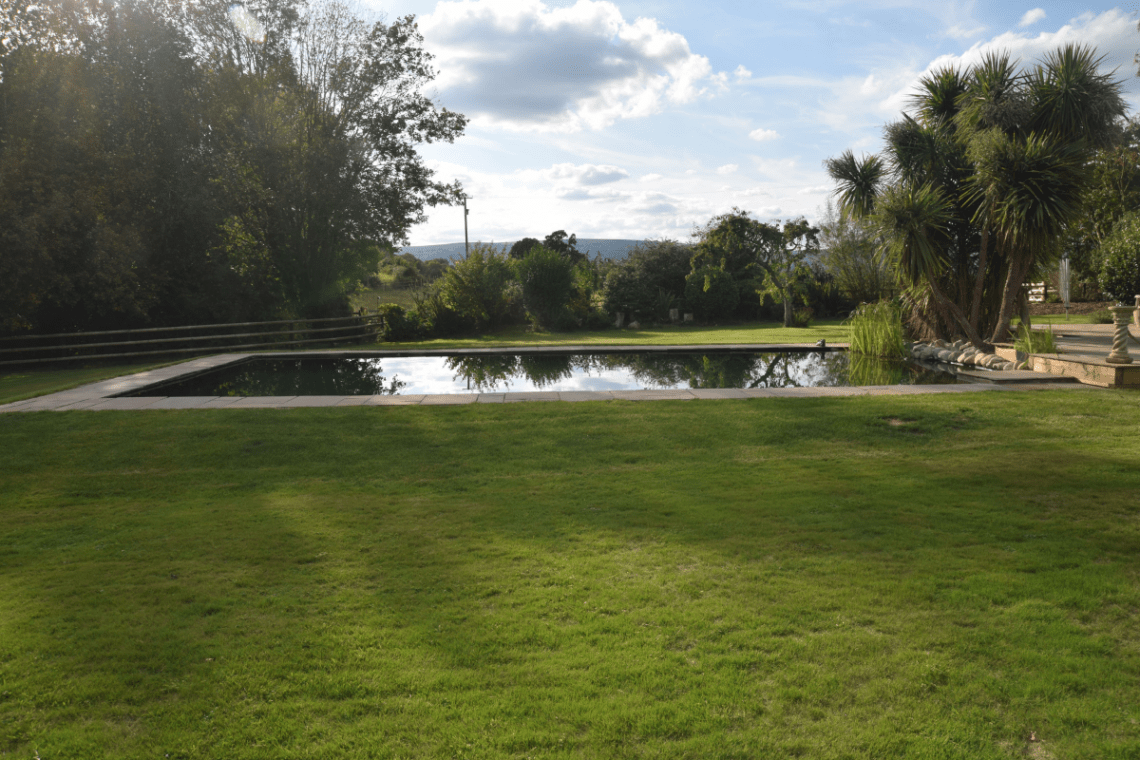
Whether you’re drawn to the sleek lines of modern design or the timeless appeal of traditional styles, Ponds by Michael Wheat is here to bring your vision to life. Our commitment to creating bespoke ponds, from swimming ponds to wildlife ponds and decorative koi ponds, means every project is a unique journey, designed with you and your garden in mind.
Explore the possibilities and start your pond project with our team of experts. Discover how we can transform your outdoor space into a haven of relaxation and beauty. Contact Ponds by Michael Wheat today to begin creating your ideal pond.
Frequently Asked Questions
1. How can I ensure my pond design is eco-friendly?
To ensure your pond is eco-friendly, consider incorporating native plants, which support local wildlife in your pond’s ecosystem and require less maintenance. Use natural filters and filtration systems to keep the water clean without excessive chemicals. Also, choosing solar-powered pumps can reduce electricity usage, making your pond more sustainable and cost-effective in the long run.
2. What types of pond liners are best for creating a new pond or refurbishing an existing pond?
The choice of pond liners largely depends on the size, shape, and type of pond you’re aiming to create or refurbish. For most low maintenance garden ponds, flexible liners made from EPDM or PVC are popular due to their durability and adaptability to various shapes and depths. For more formal ponds with straight lines or specific shapes, pre-formed fibreglass or rigid plastic liners can provide a cleaner look and are easier to install in predetermined shapes.
3. How can I ensure pond safety, especially in gardens with children?
Pond safety is crucial, especially in family gardens. Implementing measures such as installing a sturdy fence around the edge of the pond, using a grid or mesh cover, and creating shallow pond edges can significantly enhance safety. Additionally, always supervise children around water and consider designing the pond with safety in mind, such as having gradual depth changes and clear visibility.
4. What are some top ideas for incorporating a pond into a small garden?
Small gardens can benefit from pond ideas that maximise space and create a focal point. Consider installing a small formal pond or a compact pool with vertical features like a water wall. Plant-filled pools with gravel and stones can attract wildlife, adding interest and beauty to your small garden.
5. What is the ideal depth for a garden pond?
The ideal depth for a garden pond depends on its purpose. For the depth of a wildlife pond, varied levels are recommended to ensure a suitable environment for a variety of creatures. If you’re planning a koi pond, deep water of at least 1.5 meters is essential to accommodate the fish. Formal ponds used primarily for aesthetic purposes can be shallower, around 30-60 cm deep.